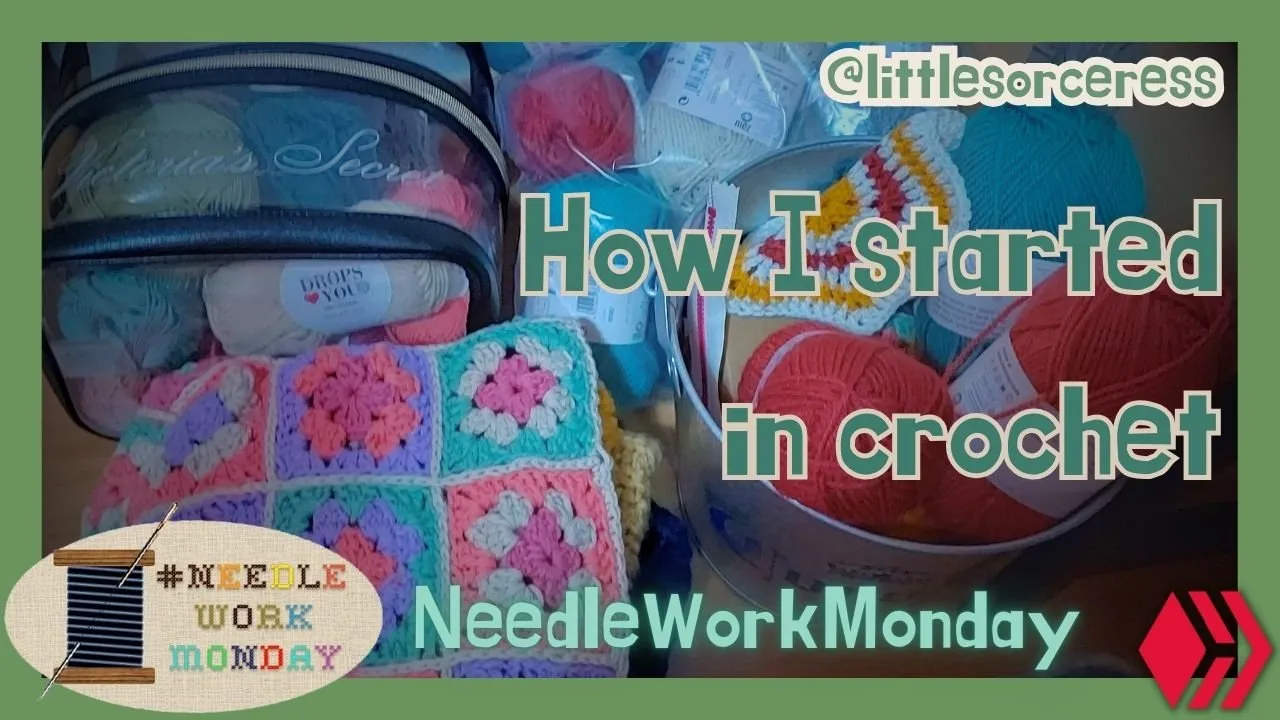
Good morning needle friends, good Monday and great start of the week. I put together today's post, taking into account that it's something I wanted to talk about for a long time, and since I spent all morning trying unsuccessfully to knit something to wrap the turtle with (we don't have another pet here haha) I also had to accept that I was not ready and between so much hustle and bustle during the week, I didn't have more time for the contest. Anyway, I saw many beautiful works and I loved the initiative. So I come to today's idea, where I proposed to make a good explanation about how I started and what recommendations I could give to someone who wants to start crocheting.
VERSION EN ESPAÑOL (click aquí!)
Buen día amigas de las agujas, buen lunes y gran comienzo de semana. Armé el post de hoy, teniendo en cuenta que es algo de lo que quería hablar hace bastante tiempo, y ya que estuve toda la mañana intentando sin éxito tejer algo con qué abrigar a la tortuga (pues aquí no tenemos otra mascota jaja) sin éxito tampoco tuve que aceptar que no estaba preparada y entre tanto ajetreo en la semana, no tuve más tiempo para el contest. De todos modos, vi muchos trabajos hermosos y me encantó la iniciativa. Así llego a la idea de hoy, donde me propuse hacer una buena explicación acerca de cómo comencé yo y qué recomendaciones podría darle a alguien que desea comenzar con el crochet.
 | 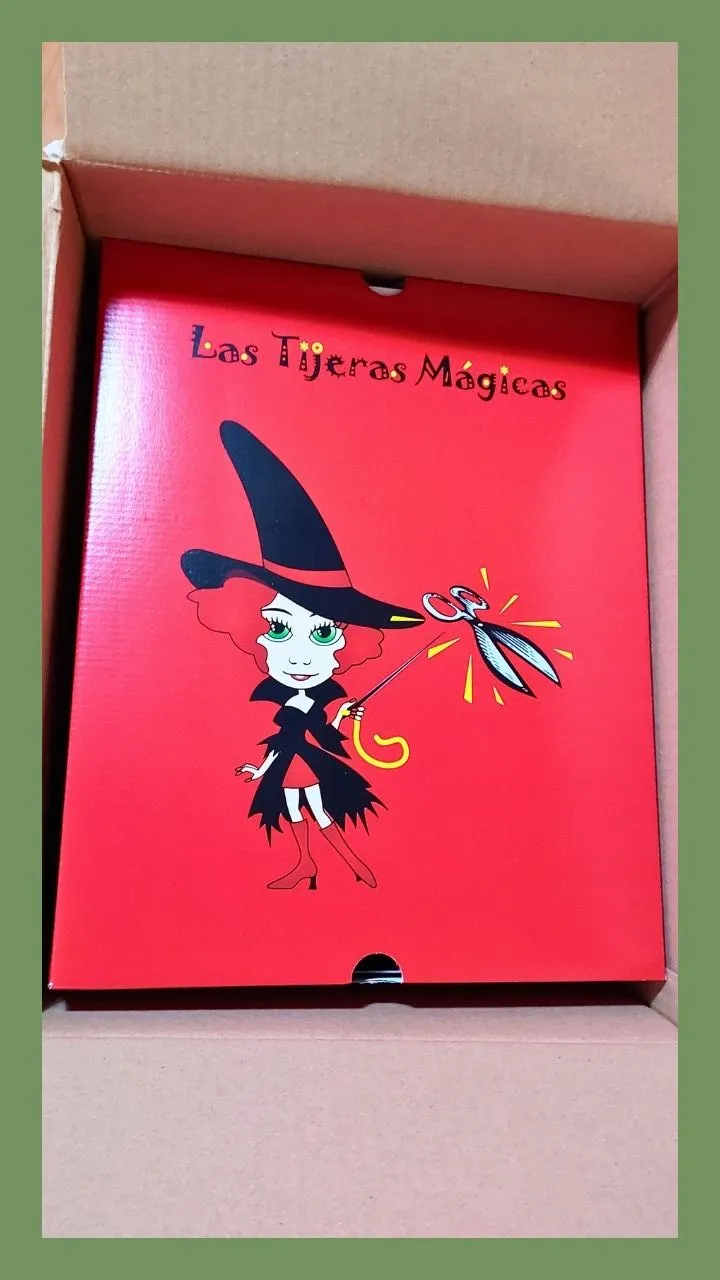 | 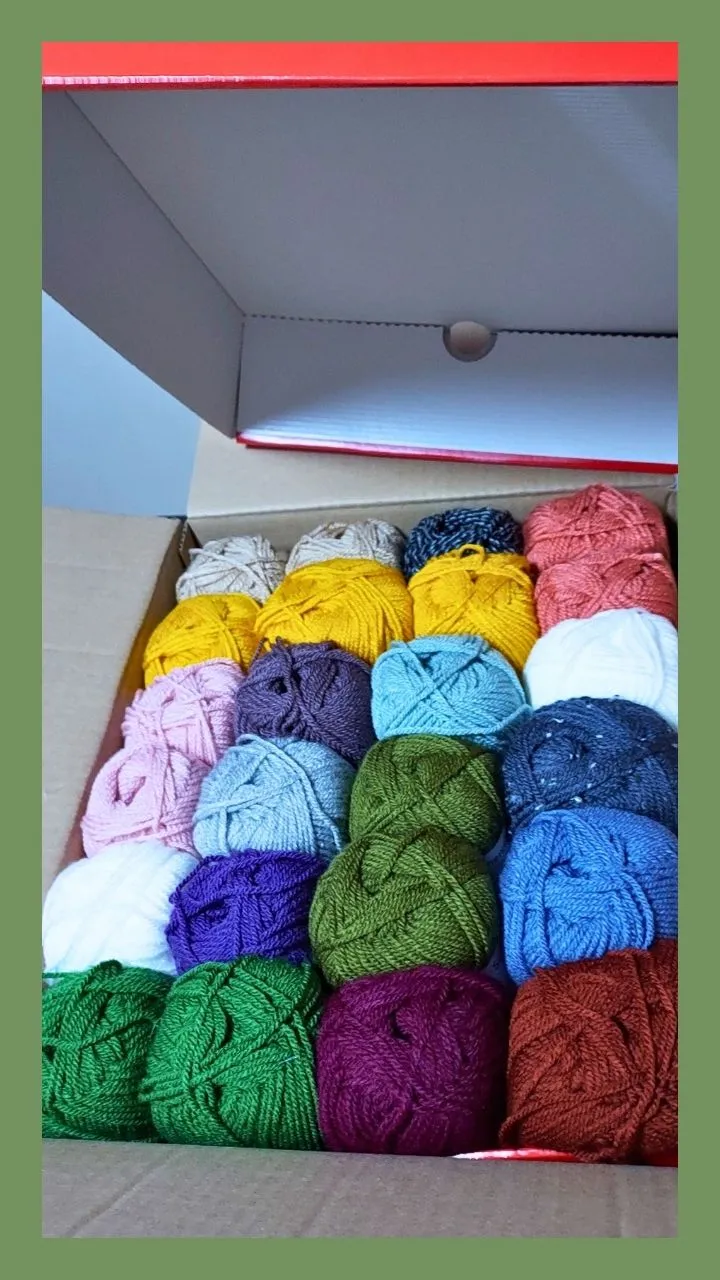 |
My relationship with crochet is intense and extensive, my mother has always knitted crochet but has never had the patience to explain it to me, so faced with that dilemma, I could ask her to make things for me, but I could not learn on my own, there were not many other people in my environment who practiced it. So, when the pandemic arrived and found me locked up in Spain, I had no better idea than to buy the materials, an online course and start.
VERSION EN ESPAÑOL (click aquí!)
Mi relación con el crochet es intensa y extensa, mi madre siempre ha tejido crochet pero nunca ha tenido la paciencia para explicarme, asique frente a esa disyuntiva, yo podía pedirle cosas para que me hiciera, pero no lograba aprender por mi cuenta, no había muchas más personas en mi entorno que lo practicaran. Por eso, cuando llegó la pandemia y me encontró encerrada en España, no tuve mejor idea que comprar los materiales, un curso online y comenzar.
 | 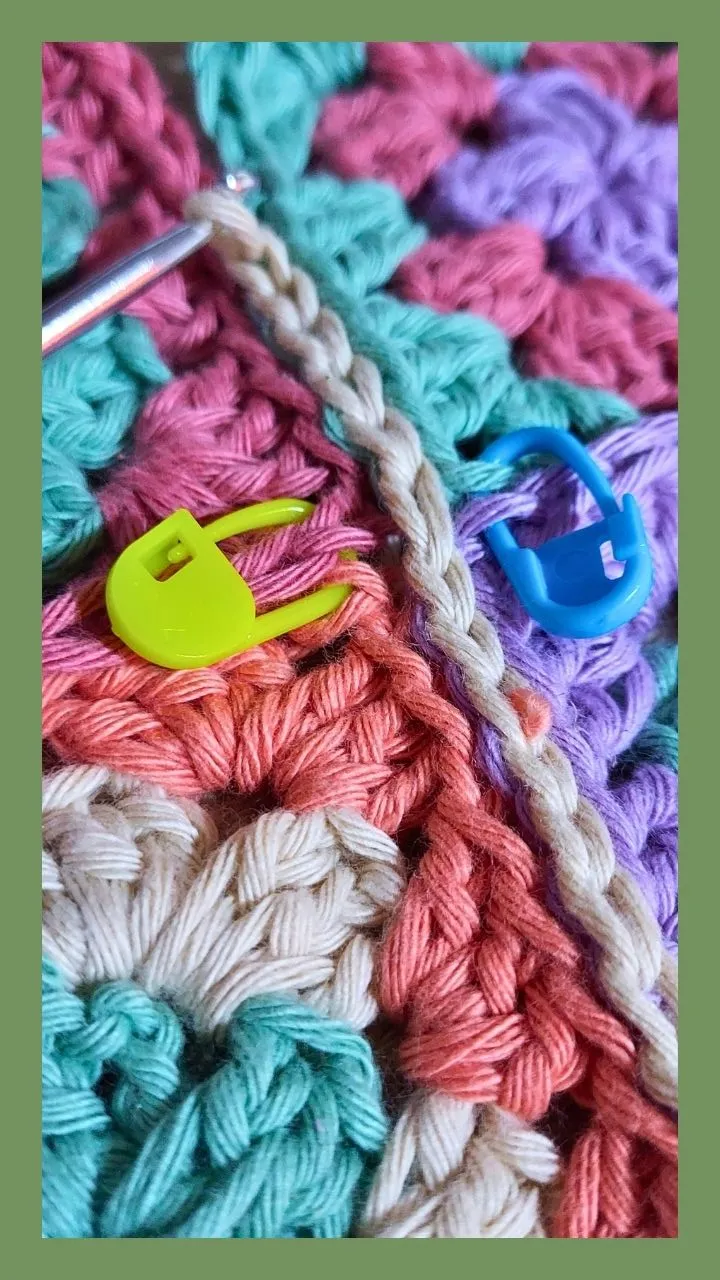 |
First Purchases - Decisions: What to do and what not to do?
In my case, the first purchases were brutal. I didn't know anything and I couldn't go to the stores in the middle of the pandemic, so buying needles was a challenge, and I didn't want to sustain the scarce knowledge on the subject (my mother always had her favorite needle and I didn't know how I would get to it) I bought several sets, of various materials and different sizes. A wooden one, a plastic handle one, and a full metal one. And buying yarn was just as risky. Everything was online and I had no way to order something 'for beginners' so I tried to think of what projects I wanted to do and what I liked to do, approximately to achieve it. Luckily a very comprehensive website, with data on yarns and I was able to choose varied colors of the same style of wool.
VERSION EN ESPAÑOL (click aquí!)
Primeras Compras - Las decisiones ¿Qué sí, y qué no?
En mi caso, las primeras compras fueron brutales. No sabía nada y no podía ir a las tiendas en medio de la pandemia, entonces comprar agujas fue un desafío, y no quería sostener el conocimiento escaso en el tema ( mi madre siempre tuvo su aguja preferida y yo no sabía cómo llegaría a ello) compré varios juegos, de varios materiales y distintas medidas. Uno de madera, uno de mango plástico, y uno íntegro de metal. Y la compra de hilados fue igual de arriesgada. Todo era online y no tenía manera de pedirle algo 'para principiantes' así que trate de pensar en qué proyectos quería hacer y que me gustaba a mi, aproximadamente para lograrlo. Por suerte una web muy completa, con datos sobre los hilados y pude elegir variados colores de un mismo estilo de lana.
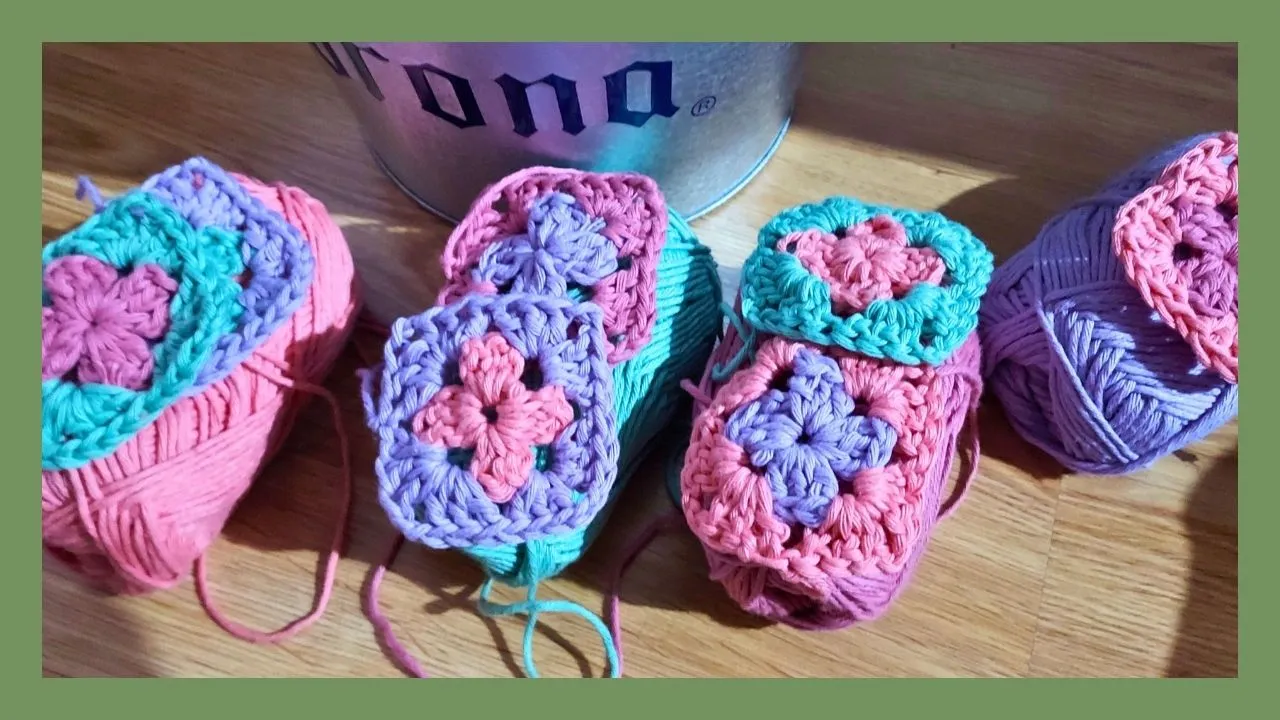
I bought colored cotton yarns thinking of starting with grannys, even if they are the simplest, to combine them. I also bought some wool to make scarves or blankets, I didn't know how much yarn I needed, so I spent at the time, about 50 euros in the store. It all came to me beautifully packaged and in a very nice box from the store. I didn't know that this would become a vice, they were my first yarns and I had always criticized my mother for having so many and not using them, ha! How deluded! Today I am that kind of knitter, who buys more yarns, even if I still have several unused ones, there are never enough!
VERSION EN ESPAÑOL (click aquí!)
Compré hilos de algodón de colores pensando en comenzar con grannys, aunque sean de lo más simple, para combinarlos. También compré algunas lanas para hacer bufandas o mantas, no sabía cuánto hilado necesitaba, así que me gasté en ese momento, como 50 euros en la tienda. Me llegó todo hermosamente empaquetado y en una caja muy bonita de la tienda. Yo no sabía que esto se convertiría en un vicio, eran mis primeras lanas y siempre había criticado a mi madre por tener tantas y no usarlas, ja! ¡Qué ilusa! Hoy soy ese tipo de tejedora, que compra más lanas, aunque tenga todavía varias sin usar, nunca son suficientes!
 | 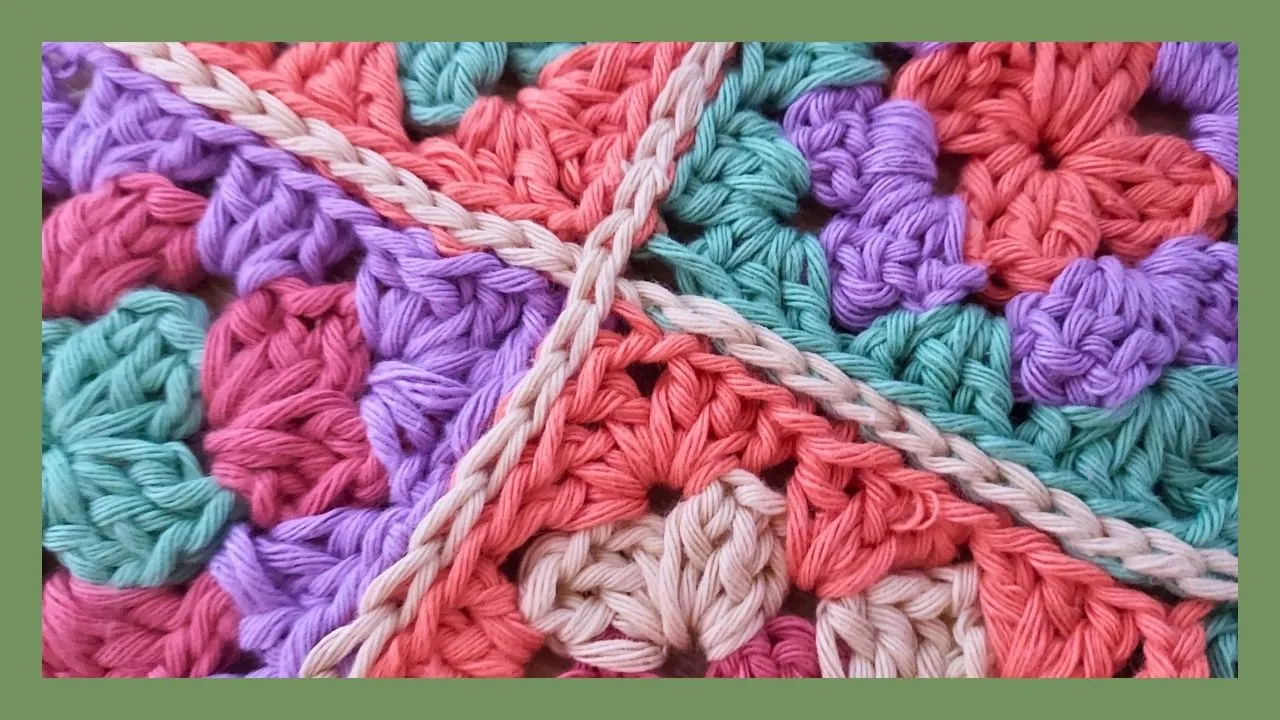 |
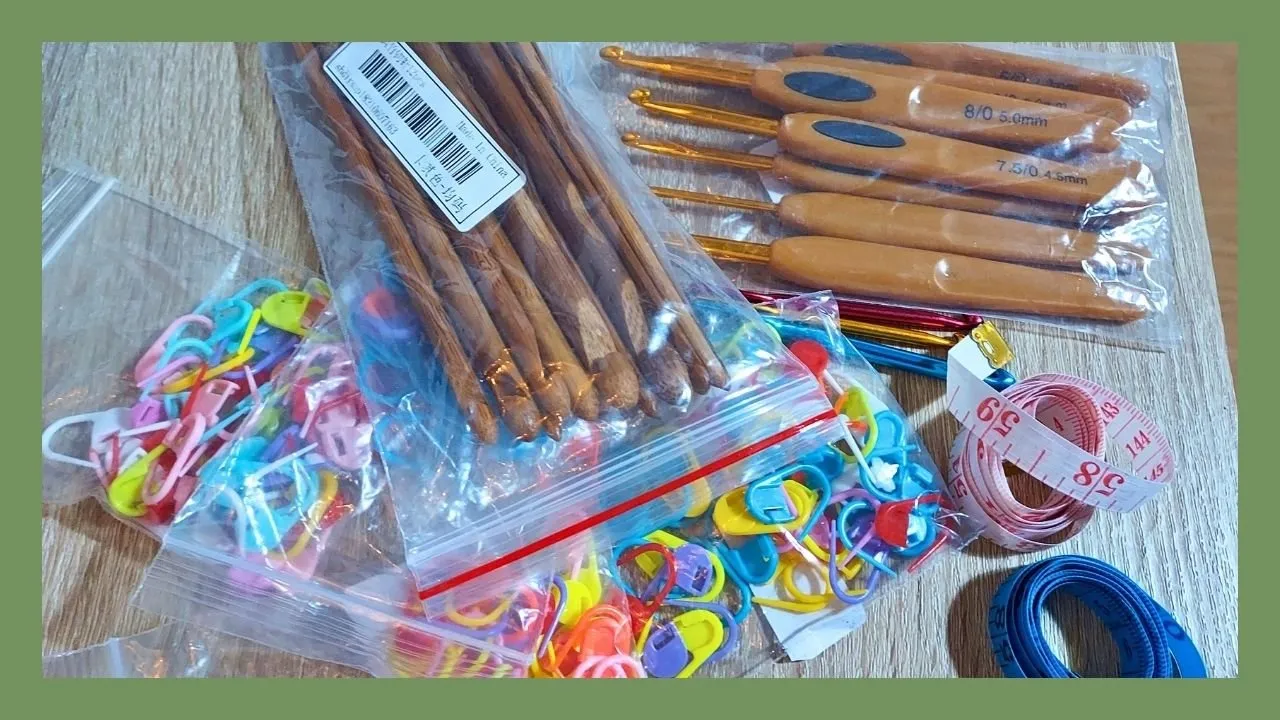
Another key example is wool needles, centimeters, and knitting pointers. I really thought that this as a kit would not be useful in my beginnings, but I got some super cheap ones that are still being used today, I recommend to have it so you don't procrastinate when you start with all your energy. The stitch markers were genius, I knew my mother had always wanted one of these, but in Argentina they were not available at that time and then they became so popular that you can get them in different materials and shapes. The ideal is something simple, the cheapest one will be fine, it only has to fulfill one function and that is to help us not to get lost about where to finish a lap.
VERSION EN ESPAÑOL (click aquí!)
Otro ejemplo clave son las agujas laneras, los centímetros, y los señaladores de punto. Realmente pensé que esto como kit no me serviría en mis comienzos, pero conseguí unos super baratos que siguen siendo usados al día de hoy, recomiendo tenerlo para no postergar nada cuando comiences con toda tu energía. Los señaladores de punto fueron una genialidad, sabía que mi madre siempre había querido de estos, pero en Argentina no se conseguían en esa época y luego se hicieron tan populares que puedes conseguir de distintos materiales y formas. Lo ideal es algo simple, el más barato estará bien, solo tiene que cumplir una función y es ayudar a no perdernos sobre dónde terminar una vuelta.
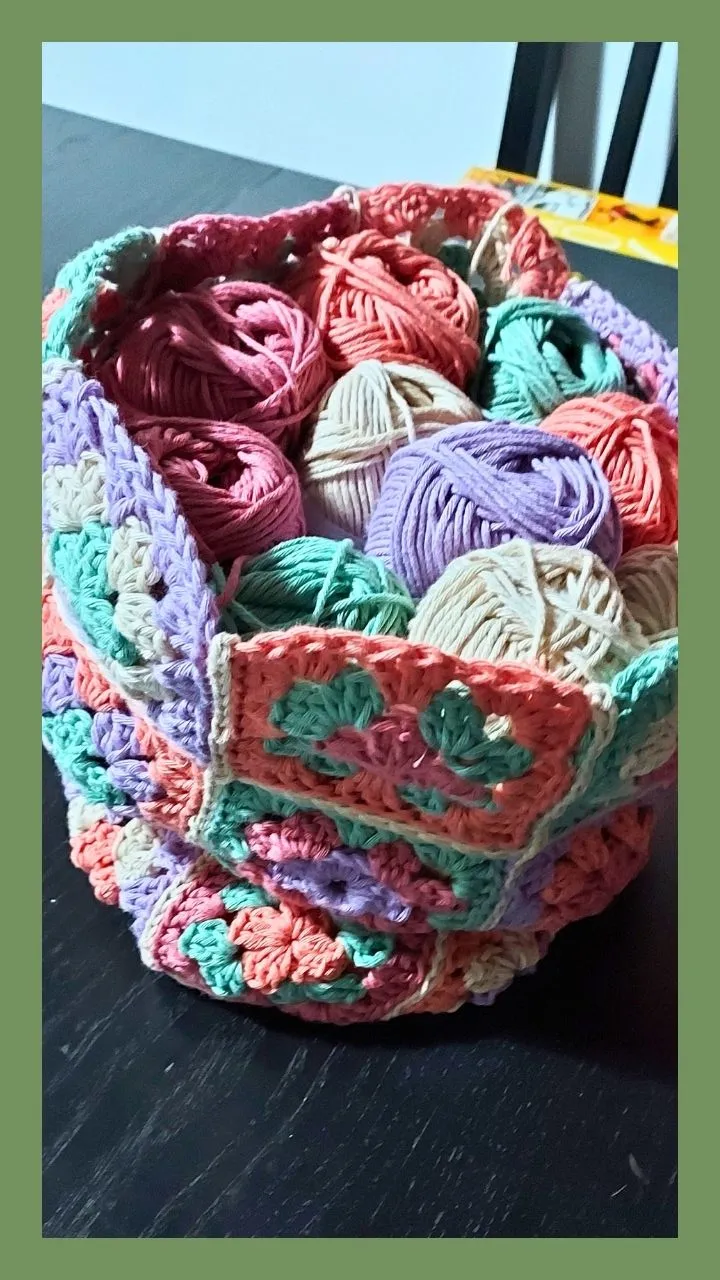 | 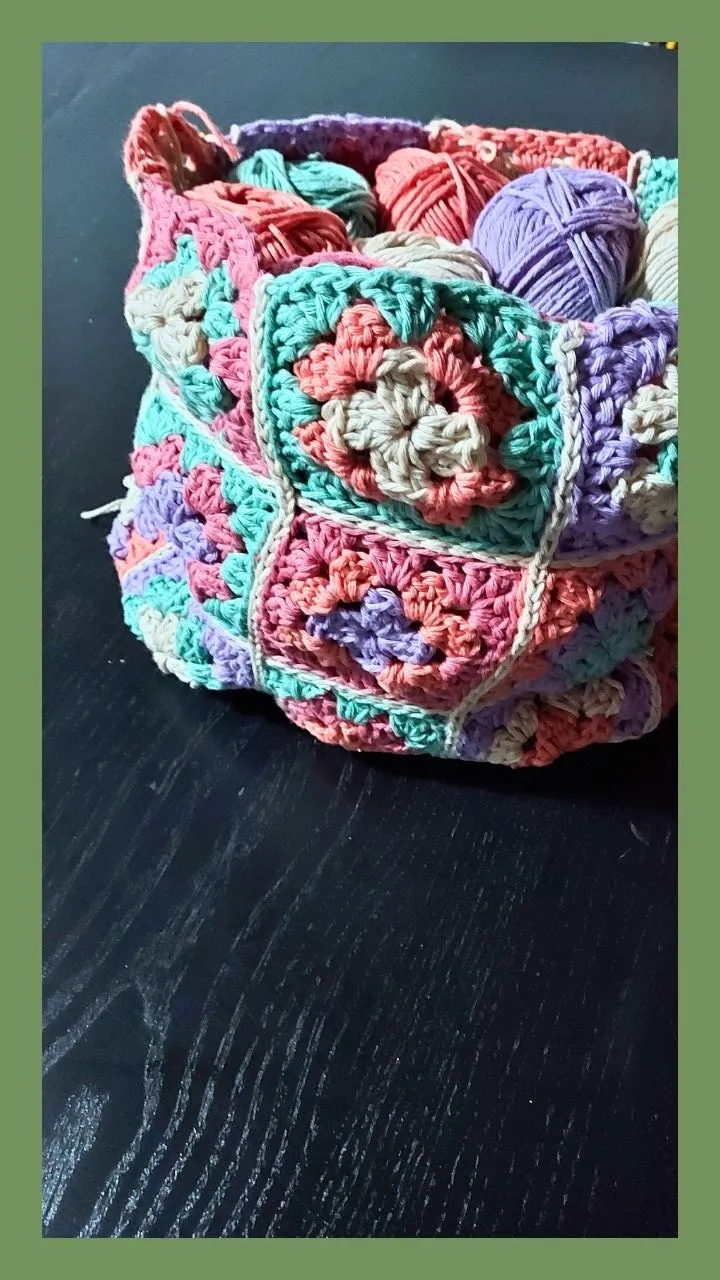 |
The moment of truth, start creating!
In my search, I started with pieces that were not big challenges, but a base fabric, repeated in many rounds. One of my favorites was the beanie hat, which I made in 5 different colors, this gave me practice and a sense of accomplishment. I could with this project, it was “easy” well thought out for beginners, and then start to complex it. Focus on learning, on differentiating the stitches, on practicing the twists of each turn, familiarizing yourself with the terms, understanding them and moving forward when no one is helping you is a challenge, yes. But it is a growth of your own and at your own pace. For example, learning to see where the needle will go in each stitch, sometimes you don't get to see it clearly, and it is a matter of investigating it more to understand then, that what I did in the previous turn, will serve as a basis for the next one, and so move forward. Let yourself be surprised, you can with something simple, a one-hour project, and with more complex things. Another of my first projects as a beginner was to create something with grannys, I didn't know what, so I decided to make the simplest grannys I could find, combine them in colors, and when I didn't have another fabric in mind, I kept making grannys. This allowed me to understand how long it takes on projects that include small, repeated pieces. Focus, following a pattern many times, practice, make you find different speeds and skills when knitting.
VERSION EN ESPAÑOL (click aquí!)
La hora de la verdad, comienza a crear!
En mi búsqueda, empecé con piezas que no fueran grandes desafíos, sino un tejido base, repetido en muchas vueltas. Uno de mis favoritos fue el gorro beanie, que lo hice en 5 colores distintos, esto me dió práctica y sentido de realización. Podía con este proyecto, era “fácil” bien pensado para principiantes, y luego empezar a complejizarlo. Enfócate en aprender, en diferenciar los puntos, en practicar los giros de cada vuelta, familiarizarse con los términos, comprenderlos y avanzar cuando nadie te va ayudando es un desafío, si. Pero es un crecimiento propio y a tu ritmo. Por ejemplo, aprender a ver dónde irá la aguja en cada punto, a veces esto no se llega a ver con claridad, y se trata de investigarlo más para entender entonces, que lo que hice en la vuelta anterior, servirá de base para la siguiente, y así avanzar. Déjate sorprender, puedes con algo sencillo, un proyecto de una hora, y con cosas más complejas. Otro de mis primeros proyectos como principiante fue crear algo con grannys, no sabía qué, así que decidí hacer los grannys más simples que encontré, combinarlos en colores, y cuando no tenía otro tejido en mente, seguía realizando grannys. Esto me permitió entender cuánto se tarda en proyectos que incluyen piezas pequeñas y repetidas. El enfoque, el seguir un patrón muchas veces, la práctica, hacen que encuentres distintas velocidades y mañas a la hora de tejer.

Different tips and recommendations
My recommendations to start: if you are lucky enough to have a store to visit, don't hesitate! Look for information there. There are certain needles for certain thickness of wool, and it all depends on the project you are looking to do. And if you're still not convinced by visiting a store, focus on buying a single color/yarn or at least all of the same thickness to knit with the same needle. If you are absent-minded like me at the beginning, write down in a notebook which needle you used for this project, so that as time goes by, you have your own record, and in case you want to repeat something, you already have that data as past experience.
VERSION EN ESPAÑOL (click aquí!)
Distintos tips y recomendaciones
Mis recomendaciones para comenzar: si tienes la suerte de tener una tienda que poder visitar, ¡no lo dudes! Allí busca informarte. Hay ciertas agujas para cierto grosor de lana, y todo depende del proyecto que busques hacer. Y si aún así, no te convences visitando una tienda, enfócate en comprar un solo color/hilado o al menos todos del mismo grosor para tejer con la misma aguja. Si eres despistada como yo a mis principios, apunta en un cuaderno qué aguja usaste para este proyecto, así con el paso del tiempo, tienes tu propio registro, y en caso de querer repetir algo, ya tienes ese dato como experiencia pasada.
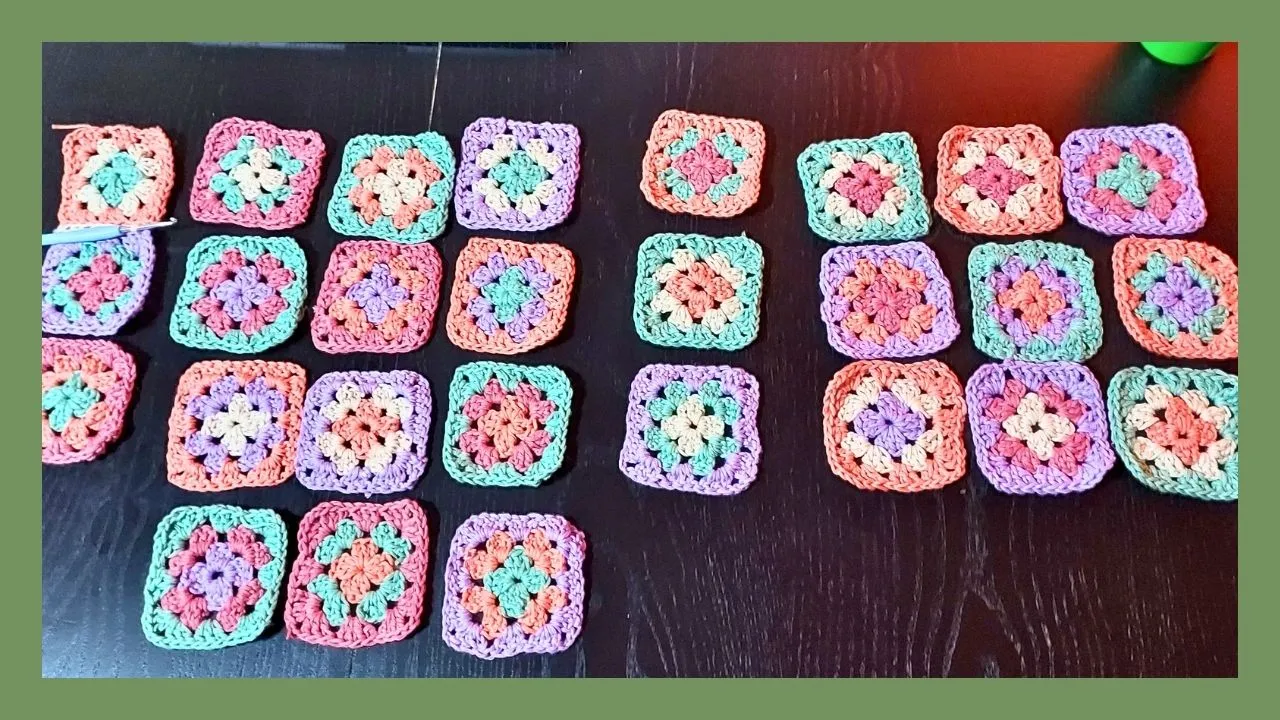
Try many tests, especially in the beginning, try to make samples of the different stitches, secure the needle in your hand, make the movements something comfortable, and try to find your own comfort, then will come the time to be uncomfortable, or make minor mistakes, but it is best to try, increases and decreases, for example, were something that I practiced tirelessly during the day and then undo what was done to start again. You don't have to cut these yarns, or use wool to leave it in waste. It's all about learning, it's practice. I would make 20 chains and on them I would practice, check how it looked, try to understand the meaning. Stay in touch with what you are doing and what you will accomplish by doing it, so it will be better for you moving forward. I realized this point and its difficulty when I tried to do something with black wool, it is more difficult and I don't recommend it to start with, I abandoned that yarn and started with a light one that gave me the possibility to see what I was doing, in dark yarns it is more difficult.
VERSION EN ESPAÑOL (click aquí!)
Haz muchas pruebas, sobre todo en los comienzos, intenta hacer muestras de los distintos puntos, afianzar la aguja en tu mano, hacer de los movimientos algo cómodo, y busca encontrar tu propia comodidad, luego ya vendrá el momento de estar incómoda, o cometer errores menores, pero lo mejor es poder probar, los aumentos y las disminuciones, por ejemplo, fueron algo que yo practicaba incansablemente durante el día y luego deshacía lo realizado para volver a comenzar. No hace falta que cortes estos hilos, ni utilices lana para dejarla en desperdicio. Se trata de aprender, es práctica. Yo hacía 20 cadenas y sobre ellas practicaba, chequeaba como quedaba, buscaba entender el sentido. Mantente en contacto con lo que haces y qué lograrás al hacerlo, así será mejor para ti al avanzar. Yo me di cuenta de este punto y su dificultad cuando intenté hacer algo con lana negra, es más difícil y no la recomiendo para comenzar, abandoné ese hilado y comencé con uno clarito que me brindó la posibilidad de ver lo que estaba haciendo, en hilados oscuros se dificulta más.
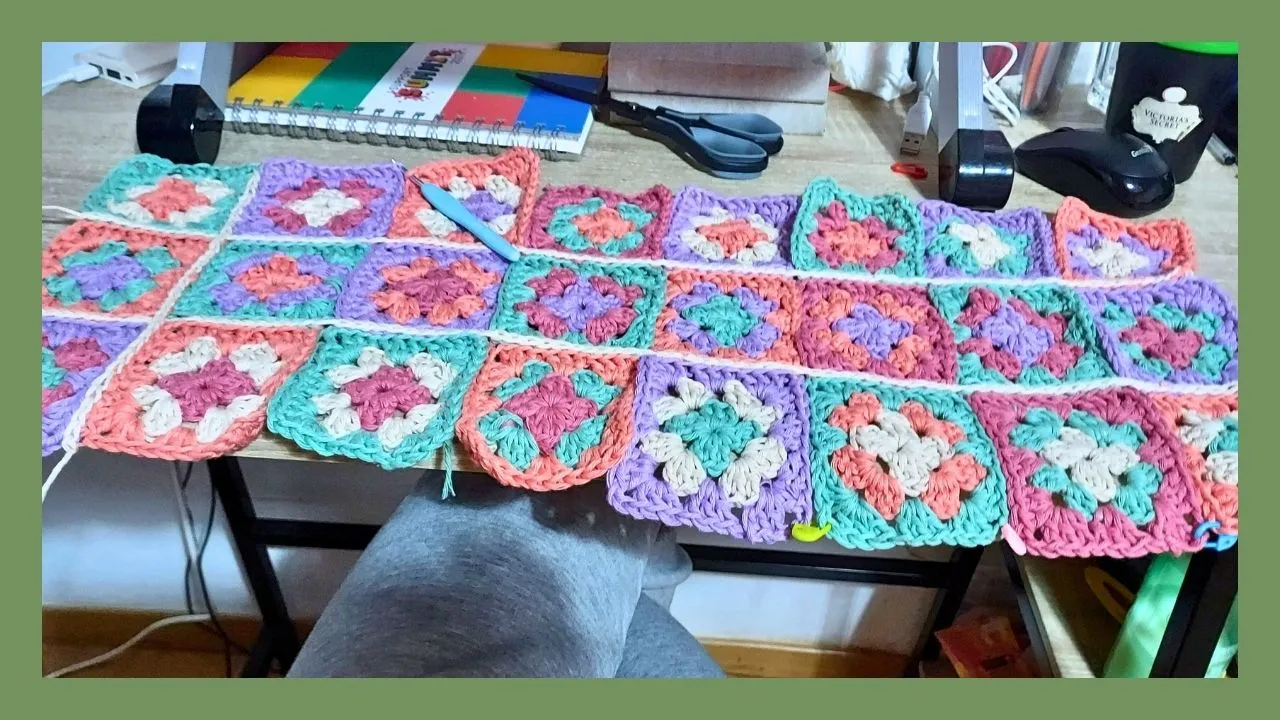
Then, don't hesitate to try things that won't come out right, try stitches, make samples, make lots of attempts, you can always undo them and start over, or leave the little piece as “my first attempt at...” That's how I keep “my first attempt at amigurumi” which then ended up turning out to be pretty much the only thing I knit. Now it's hard for me to start clothing projects, but I always save something to do when I have the initiative. This recommendation is clear: research and try. Take reference images, and draw your own ideas, they can be transformed into something great. Try a round of double stitches, then a round of half stitches, then try the in-betweens, every other stitch. All this gives you “flying hours” ... or rather “needle hours” is spending time creating what gives you confidence, especially when you face projects where you have doubts.
VERSION EN ESPAÑOL (click aquí!)
Luego, no dudes en intentar cosas que no saldrán bien, intenta puntos, haz muestras, haz muchos intentos, siempre puedes deshacerlos y volver a comenzar, o dejar la pequeña pieza como “mi primer intento de…” Así conservo yo “mi primer intento de amigurumi” que luego terminó resultando en prácticamente lo único que tejo. Ahora me cuesta comenzar proyectos de vestimenta, pero siempre me guardo algo para hacer cuando tenga la iniciativa. Esta recomendación es clara: investiga e intenta. Toma imágenes de referencia, y dibuja tus propias ideas, se pueden transformar en algo genial. Prueba una vuelta de puntos dobles, luego una vuelta de medio puntos, luego intenta los intercalados, un punto sí y otro no. Todo esto te da “horas de vuelo” … o mejor dicho “horas de aguja” es pasar tiempo creando lo que brinda la confianza, sobre todo cuando encaras proyectos donde tienes dudas.
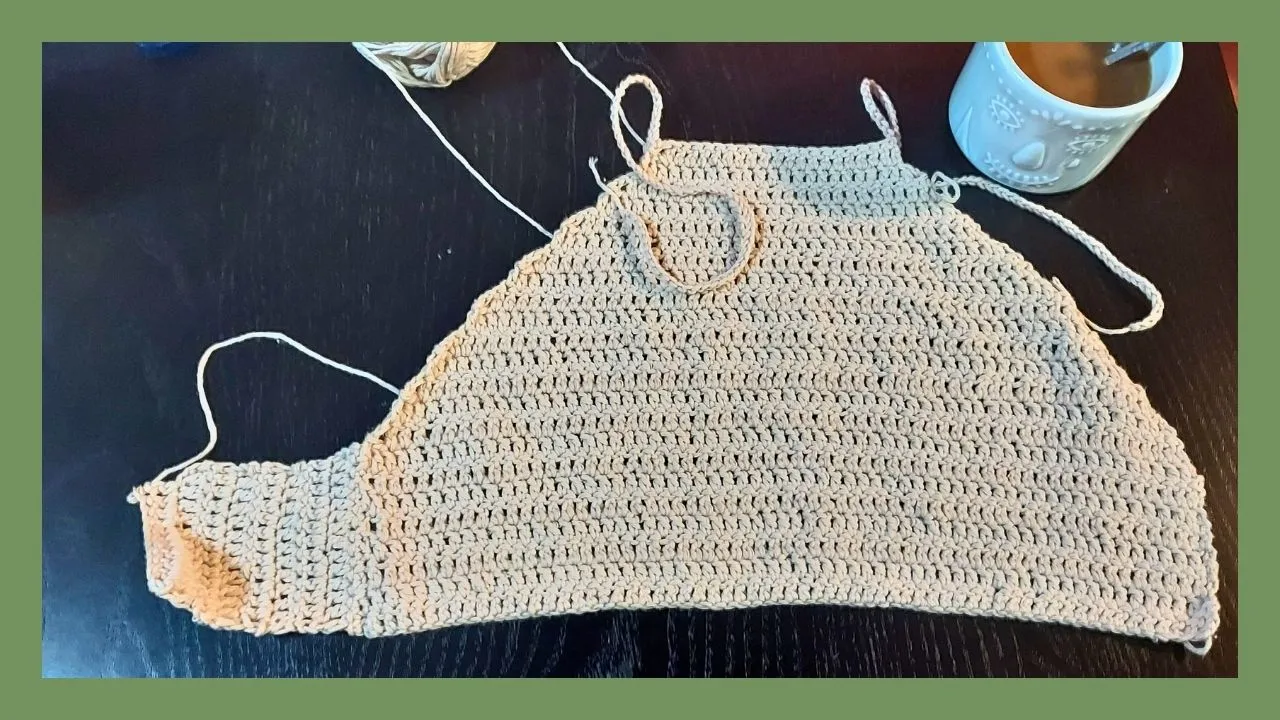
With needles the same thing: try the same project with two different needles, sometimes the size varies by very little, I could not understand how a 3mm needle was different from a 2.5mm or a 3.5mm needle. Well, the difference is noticeable and rewarding to discover. You will notice differences in the final size, you will notice differences when knitting, and it depends on your hand, which one is more comfortable, or gives you better final result, and you start to get closer to the possibility of choosing a preferred needle! haha
VERSION EN ESPAÑOL (click aquí!)
Con las agujas lo mismo: intenta el mismo proyecto con dos agujas distintas, a veces el tamaño varía por muy poco, yo no podía comprender en qué se diferenciaba una aguja de 3mm de una 2,5mm o una de 3,5mm. Bueno, la diferencia es notoria y es gratificante descubrirla. Notarás diferencias en el tamaño final, notarás diferencias a la hora de tejer, y depende de tu mano, cuál sea más cómoda, o te brinde mejor resultado final, y empiezas a acercarte a la posibilidad de escoger una aguja preferida! jaja
 | 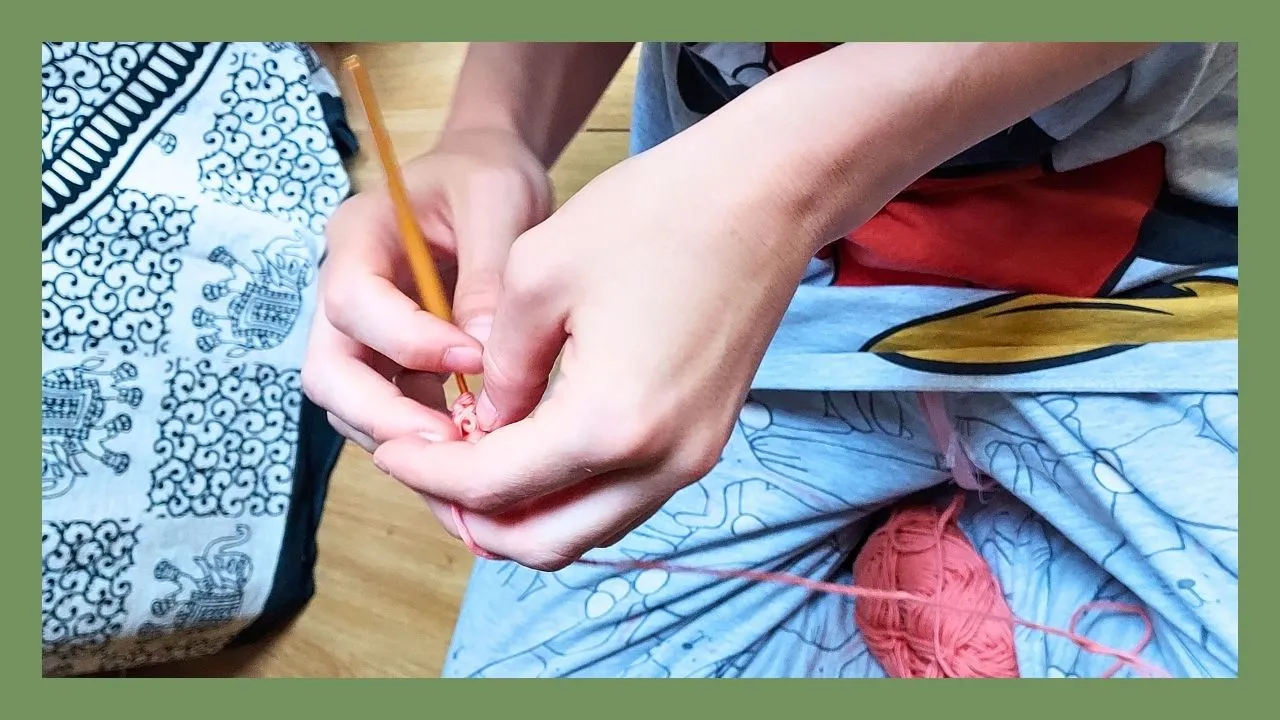 |
Recommendation I read but didn't use: Always make a stitch chart to know how much yarn you will need for each project depending on the stitch. Considering the following, each stitch carries different amount of wool, so not all sweaters will carry the same weight, given this recommendation, I must say I didn't follow it and faced buying more and less wool in my projects. It's a risk I was willing to take, although I regret it. It's a good practice, and it will also help you a lot in quoting the work in case you are going to charge for it.
VERSION EN ESPAÑOL (click aquí!)
Recomendación que leí pero no usé: Haz siempre un muestrario de puntos para saber qué tanta lana necesitarás para cada proyecto dependiendo de la puntada. Considerando lo siguiente, cada punto lleva distinta cantidad de lana, entonces no todos los sweaters llevarán el mismo peso, dada esta recomendación, debo decir que no la seguí y enfrenté comprar lanas de más y de menos en mis proyectos. Es un riesgo que estuve dispuesta a seguir, aunque me lamento. Es una buena práctica, y también te ayudará mucho para cotizar el trabajo en caso de que vayas a cobrarlo.
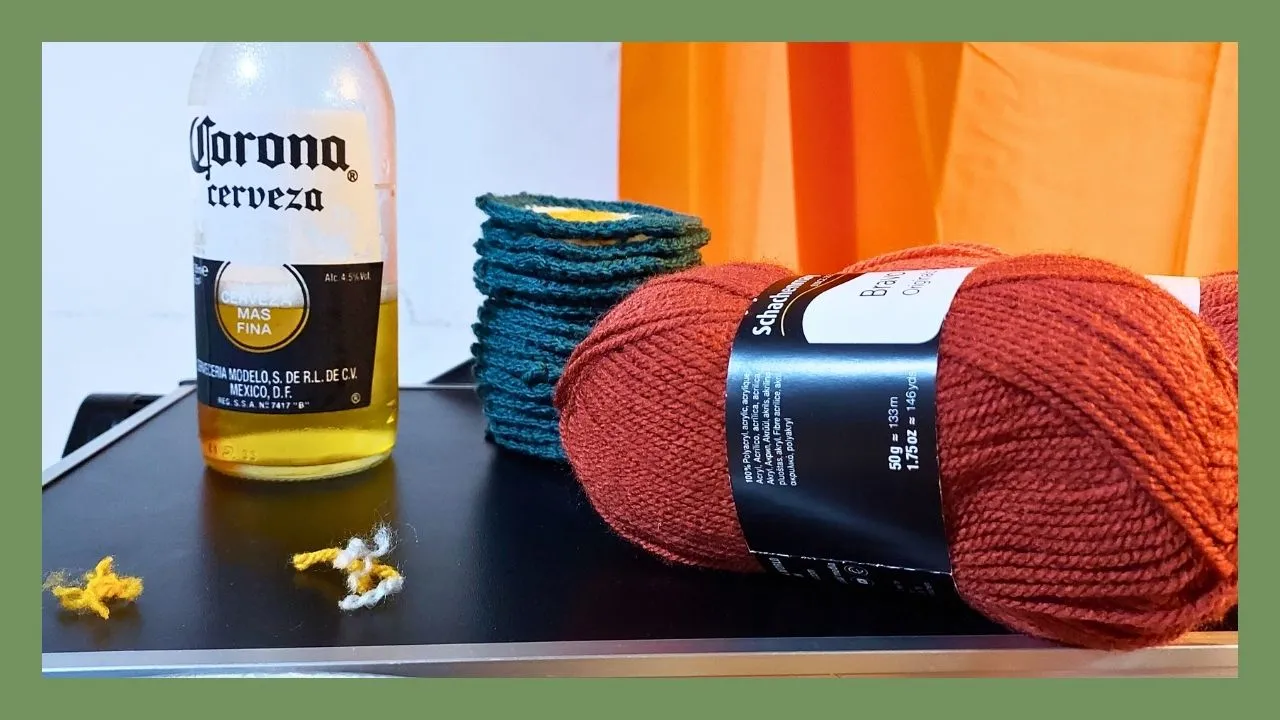
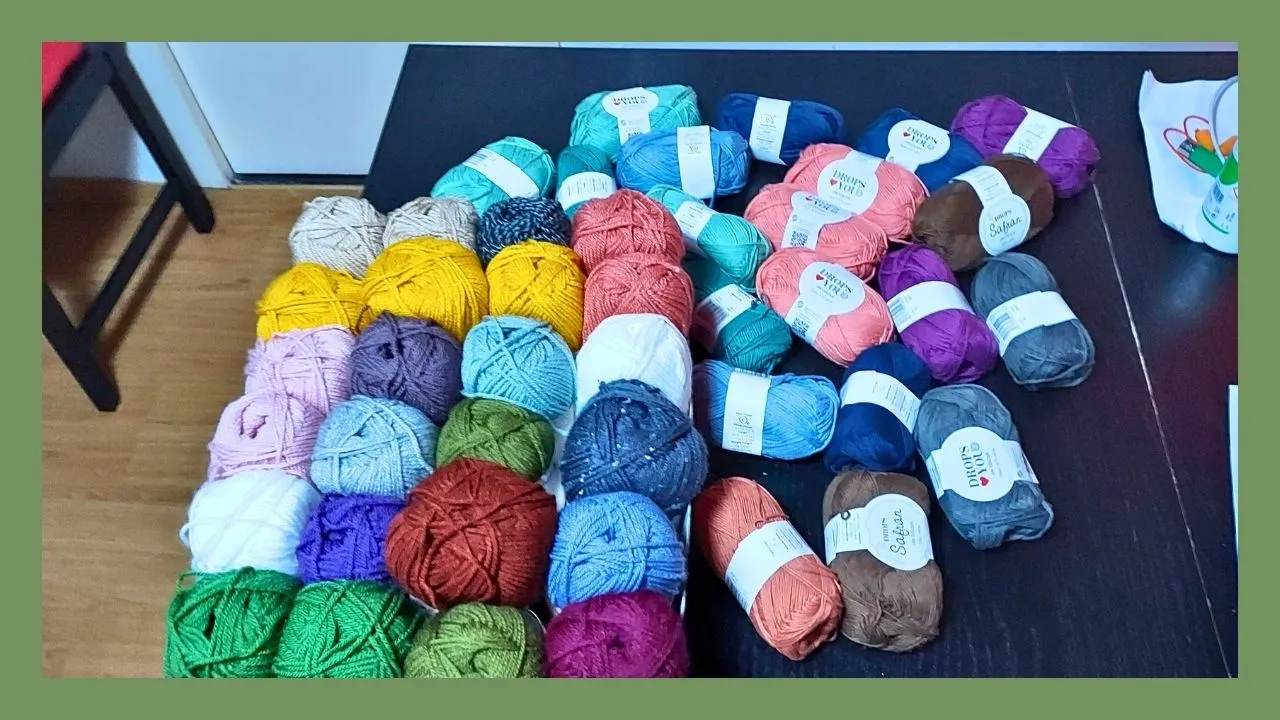
My last recommendation is more motivational: Don't get discouraged. We all learned little by little and the path is yours, regardless of what they tell you. You can dream of making a jacket, which you never make, or an amigurumi that later loses your interest. Allow yourself to explore and understand how each part is made, this will also give perspective to price the products, even if you are not going to sell them. I keep some that were many hours of work, many mistakes to overcome, a lot of learning, and that is invaluable. Don't give yourself away when it comes to valuing what you make with your own hands!
VERSION EN ESPAÑOL (click aquí!)
Mi última recomendación es más motivacional: No te desanimes. Todos aprendimos de a poco y el camino es tuyo, independientemente de lo que te digan. Puedes soñar con hacer una chaqueta, que nunca realices, o un amigurumi que luego pierda tu interés. Permítete explorar y entender cómo se realiza cada parte, esto también dará perspectiva para ponerle precio a los productos, aunque no los vayas a vender. Yo conservo algunos que fueron muchas horas de trabajo, muchos errores que superar, mucho aprendizaje, y eso es incalculable de valor. ¡No te regales cuando se trata de valorar lo que realizas con tus propias manos!
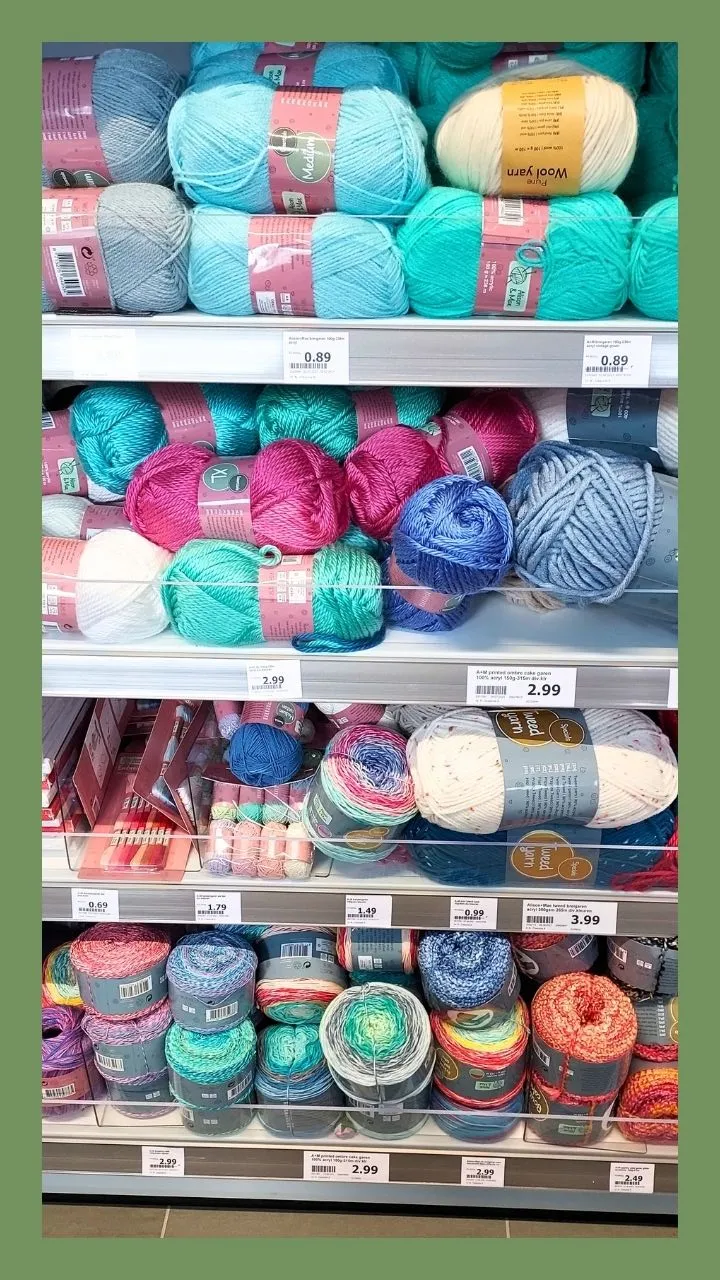 | 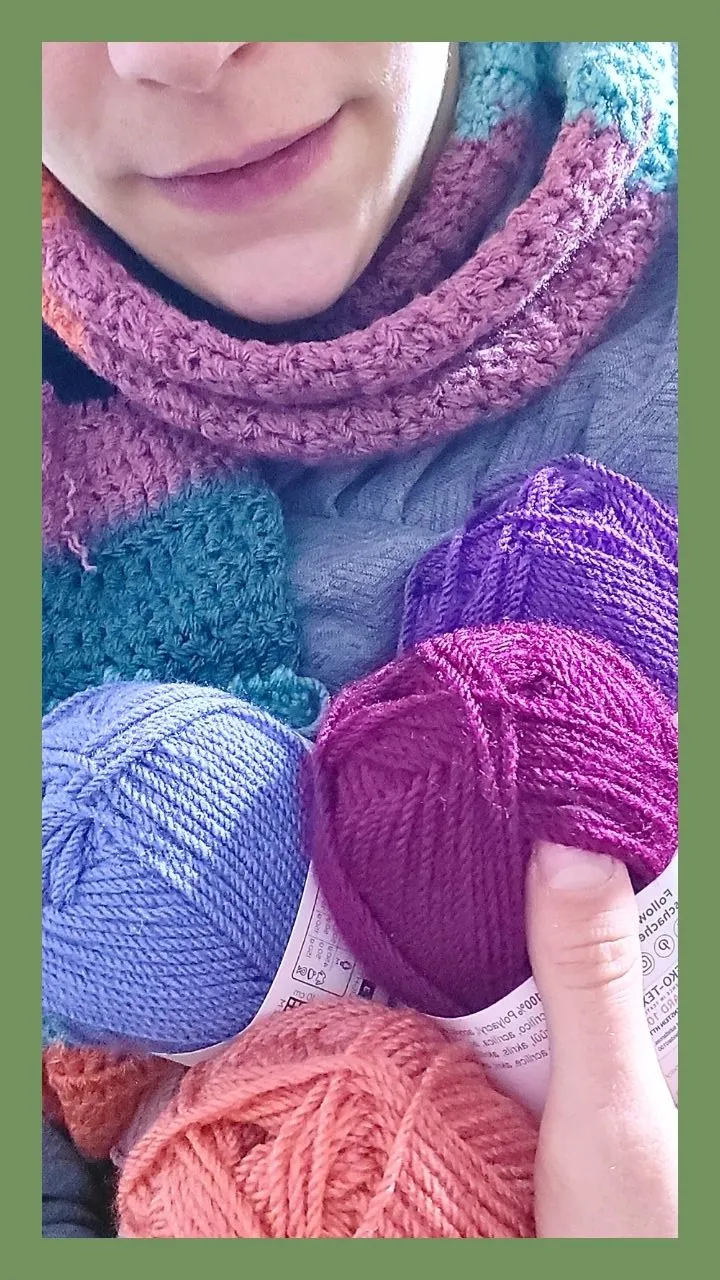 | 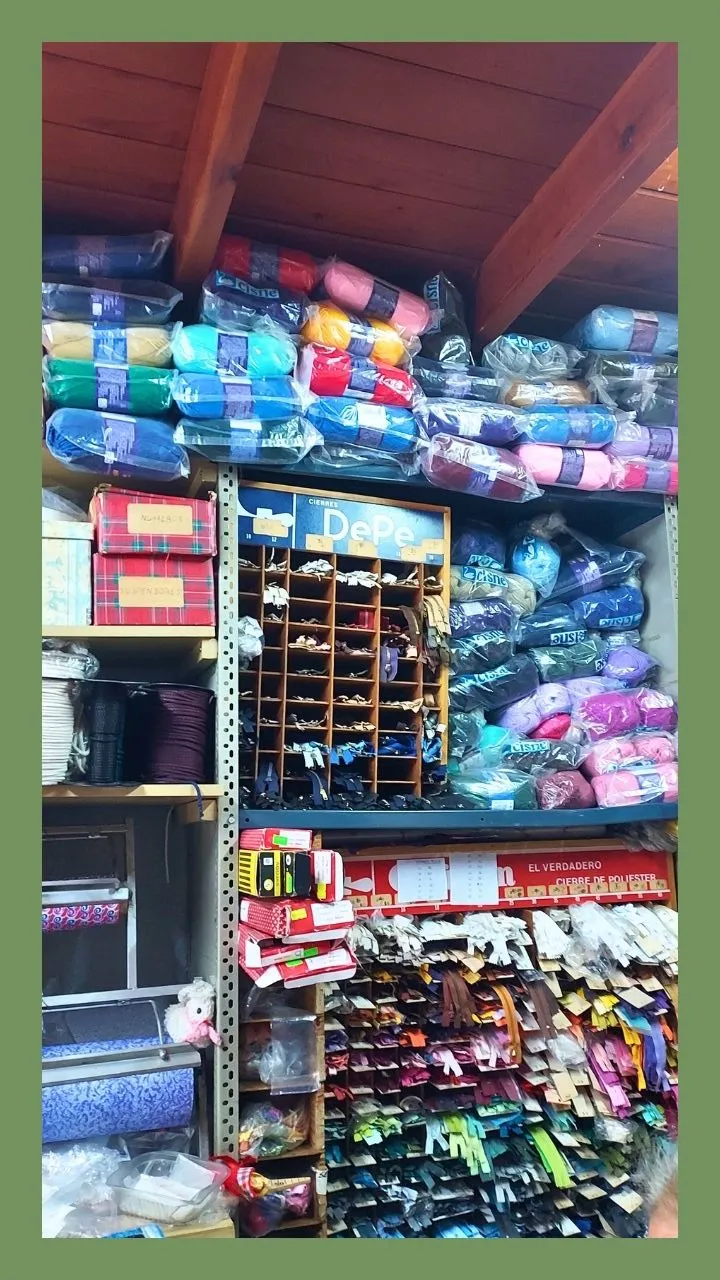 |
Finally, no matter how long you have been out of knitting, you can always start again with a small project that you find interesting and motivates you. When I started with the hats, I just made them, then I found someone to give them to as a gift. I liked being able to practice and build my knitting hand. Just as I started to try interchanging colors, I also perfected my ways of hiding leftover yarns within my projects. Everything can be learned, everything can be looked up on the internet, and you can ask other knitters as well. I hope it has served you as a guide and as a personal experience. I really wanted to reconnect with my beginnings, since 4 consecutive years ago I have not stopped learning and daring to try new and challenging projects. This starts to be like a roller coaster, the more you know, the more you want to go crazy with a project. Or maybe you don't, and you start to prefer fabrics that are comfortable and distract you from other things, it is valid that you walk your way and learn from your own experience. I hope mine has been useful for you.
VERSION EN ESPAÑOL (click aquí!)
Por último, no importa cuanto tiempo estés sin tejer, siempre puedes retomar con un pequeño proyecto que te incentive y tenga tu interés. Cuando yo comencé con los gorros, simplemente los realizaba, luego encontré a quien darlos como regalo. Me gustaba poder practicar y construir mi mano de tejedora. Así como luego empecé a probar con intercambiar colores, y también perfeccioné mis maneras de esconder los hilos sobrantes dentro de mis proyectos. Todo se aprende, todo puedes buscarlo en internet, y puedes preguntar también a otras tejedoras. Espero que te haya servido como guía y como experiencia personal. Tenía muchas ganas de reconectar con mis comienzos, ya que hace 4 años consecutivos no he dejado de aprender y de atreverme a intentar proyectos nuevos y desafiantes. Esto empieza a ser como una montaña rusa, mientras más sabes, más quieres enloquecer con un proyecto. O quizás no, y empiezas a preferir tejidos que son cómodos y te distraen de otras cosas, es válido que transites tu camino y aprendas de tu propia experiencia. Espero que la mía haya servido para ti.
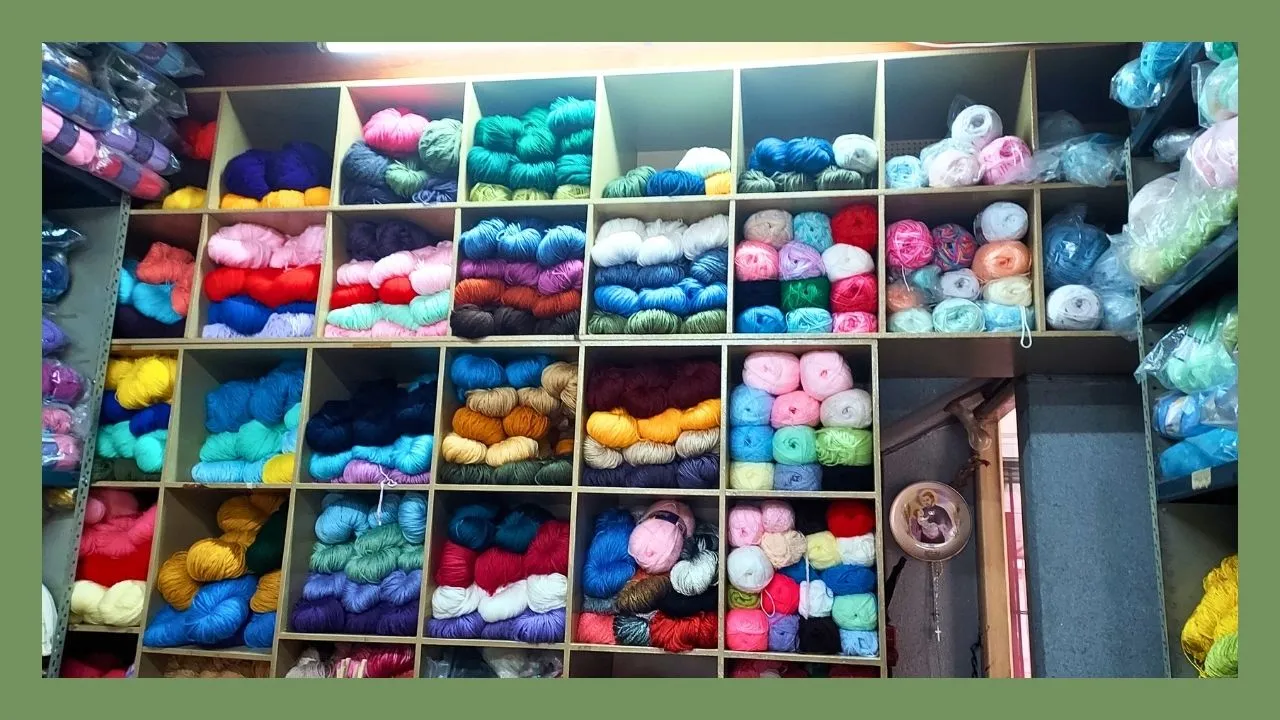
Thanks for reading me, Kiki✨
Gracias por leerme, Kiki ✨

Let's talk on Discord: littlesorceress #8877
I own the rights to all the photos I used in this post Pictures taken with a Samsung A42 & Nikon D3200📷 DeepLearning for translations
I use
&
Canva for editions